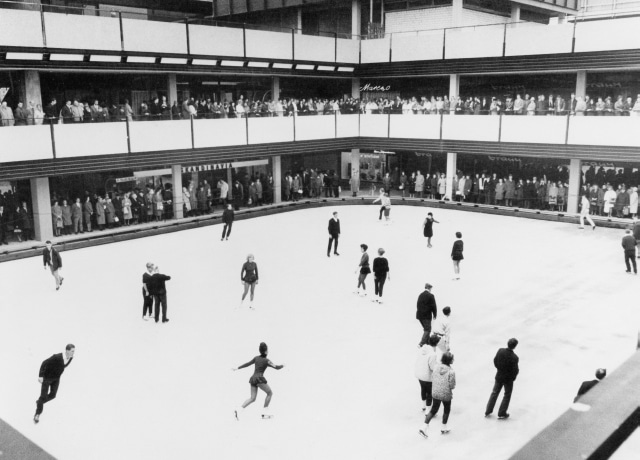Berliners were supposed to be able to skate here all year round. However, the energy costs for permanent cooling were too high. In 1974, the area was completely roofed over and the artificial ice rink in the Europa Center was closed.
Retro Video: Ice rinks in Berlin
In 1974, a new chapter in the history of a remarkable building began. The previously integrated artificial ice rink in the Europa Center was removed to make room for further innovations. But what happened in the years that followed and what creative decisions were made to transform this space?
Architect Ivan Krusnik was the creative mind behind the redesign of the originally open courtyards. Krusnik's visionary concepts led to the roofing of the courtyards, creating a new, versatile space. The café, terraced over a water feature, is a testament to his talent for harmonising space and design.
In 1982, Krusnik again brought changes to the interior of the building. One outstanding innovation was the installation of the Water Clock of Flowing Time, an artistic creation by the Parisian physicist Bernard Gitton. This unique element adds an extra dimension of time and movement to the interior.
In addition to the water clock, the Lotus Fountain was also installed, a remarkable work of art that was originally installed in the Neue Nationalgalerie in 1975. Its introduction not only aesthetically enhanced the space, but also created a place of peace and contemplation.
The building has undergone many transformations over the years and is a testament to the dynamism of architecture and design. It is this constant redesign and adaptation that makes this building so appealing and beautiful.


Account login
Then register here. As soon as we have an exact date for the birthday party, we will let you know so that you can pick up your personal birthday surprise and also take part in the record attempt.
Simply enter your details and we will get back to you as soon as possible.